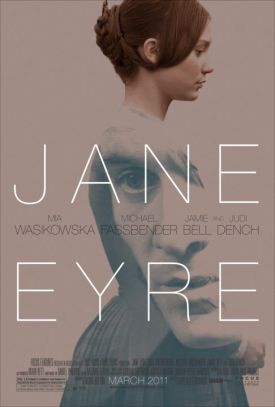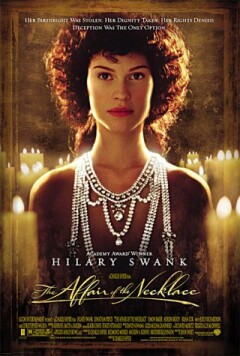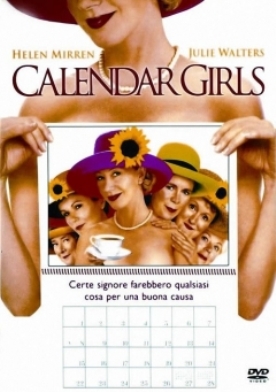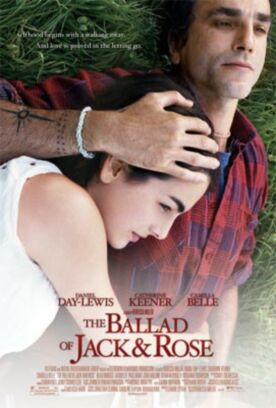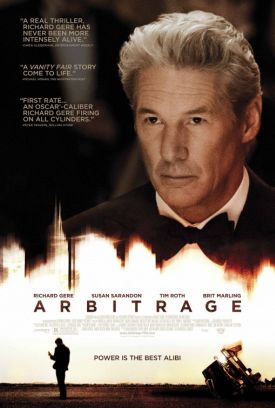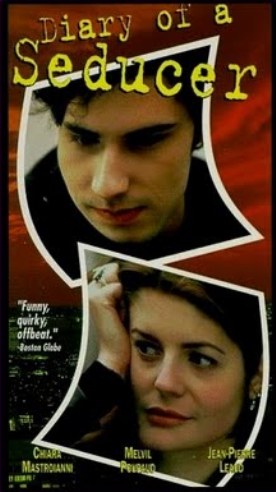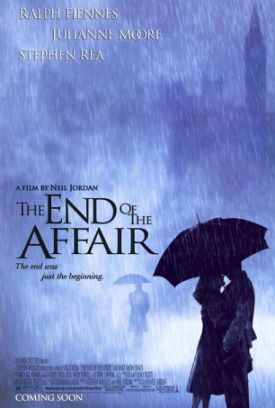Jane Eyre
Movies, we sometimes have to remind ourselves, are a pre-eminently visual medium, and this always means that there are certain things they can do better than others. These things come into sharper focus when someone tries to translate a work of literary fiction into cinematic terms — as someone has tried to do with Charlotte Brontë’s Jane Eyre more than twenty times since the procedure became possible a century or so ago. The latest to try is Cary Fukunaga (Sin Nombre), working from a script by Moira Buffini. The two of them, together with director of photography Adriano Goldman, have created a strikingly beautiful film. The question remains, however, as to whether or not it is visual beauty that is wanted when it comes to Jane Eyre, whose eponymous heroine is unambiguously described as “plain,” so we must suppose, for a reason.
I have read some critics who have tried to make the case for the literal plainness of Mr Fukunaga’s Jane, who is Mia Wasikowska (The Kids are All Right), but I don’t believe that any unbiased observer will be persuaded. Miss Wasikowska is small and boyish of figure — she would do very well for one of those Shakespearean heroines who dress up as boys — but she is very far from being plain. On the contrary, she is as beautiful as the magnificent Peak District landscapes of Derbyshire that Charlotte Brontë herself apparently wished to substitute for the less picturesque moors of her native West Yorkshire and that Mr Goldman lays on with glorious excess, one after another, in between a series of warm and evocative candle- and hearth-lit interiors. Even at her most downtrodden and miserable, this is a Jane that you can’t take your eyes off.
Fifteen years ago — can it really have been so long? — Franco Zeffirelli tried to get around this problem by casting Charlotte Gainsbourg in the role. Miss Gainsbourg was even less conventionally pretty than Miss Wasikowska, but she was equally attractive and so equally tended to push this classic story of inward beauty’s triumph over the outward kind in the direction of, if not all the way to, incoherence. There, too, there was the problem of William Hurt’s idiosyncratic and new agey Rochester, the mystery man who employs her as a governess before improbably falling in love with her. Mr Fukunaga’s Michael Fassbender does a much more persuasive job with the role, even if he is as unfortunately trapped by the logic of the cinema as his predecessor and his co-star.
That logic is simply too hostile to the idea of finding goodness in the unattractive — or perhaps I mean attractiveness in mere goodness — without the spice of visual beauty. Mr Fukunaga is required by the same logic to make his bad characters, who are Jane’s oppressors, very unattractive indeed. Even Sally Hawkins, so attractive in Mike Leigh’s Happy-Go-Lucky is well and truly uglied up as Jane’s horrid Aunt Reed. This personage is equally awful in the novel, but Lowood School, to which Aunt Reed sends Jane to get rid of her, is not. On the contrary, it is only Mr Brocklehurst who is the seriously bad guy in the novel. The rest of the staff, there, and particularly the head teacher Miss Temple are much more sympathetic to Jane, and Miss Temple becomes a beloved mentor. Mr Brocklehurst (Simon McBurney) is a shadowy figure in the film and I thought Miss Temple missing altogether — as she was in the Robert Stevenson-Orson Welles version of 1943) — until I saw that she was listed in the cast as having been played by Edwina Elek. Certainly, she was nothing like the Miss Temple of the novel.
My guess is that audiences today prefer the “Dickensian” imagery of unrelieved adult cruelty to children in stories of Victorian scholarship — perhaps in order to persuade themselves that the permissive approach to education which has superseded it, whatever its shortcomings, must still be superior. We also prefer that religion, which is always in the mouths of the bad people and the justification of the school’s tyranny over Jane, should be presented as an unmitigated evil, even though in the novel it is explicitly Christian forbearance and virtue that get Jane through her difficult childhood and youth. But the anti-religious biases of the movie business presumably have less to do with the logic of the cinema than with merely adventitious cultural imperatives. Given the centrality of religious belief both to the novel and to its original audience, its marginalization here cannot be a trivial flaw, even if it is very nearly an inevitable one. Rare, indeed, is it anymore to see a film — like the truly exceptional Of Gods and Men — where religion is presented even somewhat sympathetically let alone with genuine understanding.
Thus, too, in Mr Fukunaga’s and Miss Buffini’s Jane Eyre, the love for the heroine of the parson and would-be missionary St. John Rivers (Jamie Bell) is not treated with the respect it gets from Miss Brontë. In fact, the novel ends with Jane’s solicitude for the long absent and still unmarried St John whose missionary labors among the heathen in India are likely soon to be the death of him. In the movie, he comes off as being little better than a creep and a stalker, in spite of his kindnesses to Jane. Dame Judi Dench does a characteristically creditable job as Mrs Fairfax, Mr Rochester’s housekeeper, but the other minor characters, including Bessie (Jayne Wisener), Aunt Reed’s sympathetic housemaid, Grace Poole (Rosie Cavaliero) and even Helen Burns (Freya Parks), Jane’s poor, doomed school-fellow, a role played by Elizabeth Taylor in the 1943 version, fail to make much of an impression. The nine-year-old version of Jane as played by Amelia Clarkson is good enough that we must regret how little chance she is given to give us the child’s perspective on the adult world that has always been such a memorable feature of the novel.
But I would not be like Miss Scatcherd, who is said in the novel to have eyes that gaze on the few spots to be found on “the disc of the clearest planet” and “can only see those minute defects, and are blind to the full brightness of the orb.” All this is to qualify the positive impression that the film still contrives to make in spite of its simplifications and its both more and less forced superficiality. In its favor, we must cite the beauty aforementioned and a rather clever use of flashback in telling Jane’s story beginning in medias res that is also very cinematic. As the novel’s sense of friction between outward appearance and inward reality doesn’t really show up on film, the film-makers have substituted for it an implied friction between past and present, between the Victorianism (as we have learned to think of it in a pejorative sense) of Jane’s unfortunate and oppressive background and upbringing and the more up-to-date individualism that, in historical fact, actually sprung out of the romantic Victorian world-view but that, a century and three quarters later, we have come to take for granted.
In the novel, when Jane returns to Mr Rochester it is because the mystical ties of sympathy between them which allows Jane to hear what seems to her his cry for help when she is on the point of accepting St. John’s proposal. That would never do for Mr Fukunaga, who instead has her make up her mind to defy convention and agree (as she thinks) to live as his mistress when she has definitively rejected St John. Instead of ending with the latter’s heroic mission to the “Hindostanee” idol worshippers like the novel, the movie ends with Jane’s remarking to Rochester on the dreamlike quality their reunion and his reassuring her: “Awaken, then.” Instead of himself coming to see “the hand of God in my doom,” as he does in the novel, Rochester now only has eyes, if still vacant ones, for Jane.
Charlotte Brontë herself could hardly deny that the story was essentially the love story of Jane and Rochester, but much of the interest of her novel today lies in the social and economic, moral and intellectual circumstances out of which that story arose and which made it possible. About these things not just this film but all films these days are very nearly clueless. That’s what makes me a bit more regretful for what is lost than appreciative of all that is gained from this very beautiful Jane Eyre.
Discover more from James Bowman
Subscribe to get the latest posts to your email.

